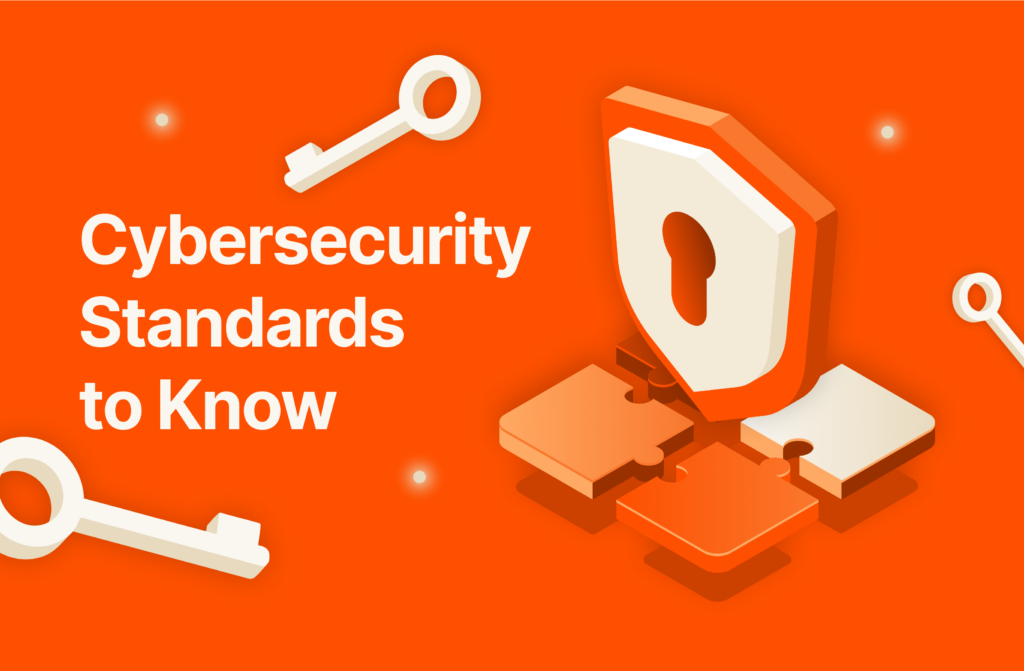Summary
In 2024, even major corporations and government agencies fell victim to sophisticated cyberattacks. Strengthening cybersecurity at every level of an organization is critical to mitigate risk.
Data breaches aren’t just frequent, attention-grabbing headlines—they’re a stark reminder of the vulnerabilities lurking in our networks. For businesses and individuals alike, recent data breaches underscore a sobering reality: Sensitive information is more at risk than ever before.
Healthcare, and health-related information, has been hit particularly hard. Just look at this list of all breaches reported to the U.S. Department of Health and Human Services within the last 24 months. Pay particular attention to the “Individuals Affected” column. Those are some pretty high numbers.
Notably, these incidents aren’t isolated to small companies or specific industries; even major corporations and governments have fallen prey to sophisticated cyberattacks. Understanding how and why these breaches occur is essential to defending against future threats. By analyzing the lessons learned from these recent data breaches, we can begin to build a more resilient approach to safeguarding valuable data.
Read on to explore key insights from some of the most impactful data breaches of 2024, revealing essential strategies to help organizations strengthen their cybersecurity defenses and avoid becoming another company on the “breached” list.
The 10 Biggest Data Breaches of 2024
In 2024, there were many significant data breaches that impacted organizations globally, exposing sensitive information and underscoring the persistent challenges in cybersecurity.
While there still might be more to come, these were the most notable cybersecurity breaches of 2024 thus far.
1. Major Cloud Storage Platform
An early June hack against a large cloud storage provider rapidly evolved into one of the biggest data breaches ever. The incident exposed sensitive business data stored by some of the provider’s most high-profile clients. Despite this company’s high standards for security, attackers reportedly targeted users with single-factor authentication. The cloud storage provider didn’t require its customers to set up multi-factor authentication (MFA). As a result, it appears that hackers were able to glean huge amounts of data from them.
2. Tech Giant
In September, a multinational technology company disclosed a breach that led to the leak of the data of more than 10,000 employees thanks to a targeted phishing campaign that compromised internal networks. Attackers gained unauthorized access to emails and sensitive documents, impacting a range of clients and partners. The company’s investigation revealed that the breach involved social engineering tactics that led to a credential compromise, highlighting the vulnerability of even well-established security measures to highly targeted phishing attacks.
3. Telecom Behemoth
In April, a telecommunications stalwart discovered unauthorized access to customer data stored on a third-party cloud platform. An investigation, involving leading cybersecurity experts, determined that call and text records of nearly all of the company’s cellular customers, MVNO users on the telecom’s network, and landline customers interacting with those cellular numbers were compromised. The affected records included:
- Telephone numbers interacted with from May 1-October 31, 2022, and some from January 2, 2023
- Cell site identification numbers for a subset of records
The breach did not include the content of calls/texts, Social Security numbers, birth dates, or other sensitive personal data. However, publicly available tools could potentially link phone numbers to customer names. Law enforcement has apprehended at least one suspect, and the company has secured the access point.
4. Pathology Lab
One of the most alarming breaches of 2024 involved a pathology and diagnostic services provider, which saw the exposure of extensive patient data, including medical records, personal information, and lab results. Hackers exploited an outdated API endpoint that granted access to sensitive patient data. This breach placed the lab under heavy scrutiny as healthcare providers face increasing pressure to secure patient information amid rising cyber threats.
5. Tech Titan
In January, a Russian-linked group known as “Midnight Blizzard,” the same group responsible for a devastating supply chain attack in 2020, breached the tech giant’s email accounts, targeting the executive team. The group used this breach to steal data to access other parts of the company’s network, including source code repositories.
Midnight Blizzard also recently conducted a large-scale spear phishing campaign targeting the tech company’s users in more than 100 organizations globally. The attackers used legitimate addresses to send emails containing a signed Remote Desktop Protocol (RDP) configuration file to gain initial access to the targets’ devices. The tech behemoth said the campaign represents “a novel access vector” for Midnight Blizzard.
6. Healthcare Tech Company
In February, a ransomware attack on this healthcare industry revenue and payment cycle management provider severely disrupted U.S. healthcare operations and ultimately affected 100 million individuals. The attackers accessed sensitive patient data, impacting potentially one-third of all Americans and halting claim processing for weeks. The parent company paid a $22 million ransom to recover data, which included medical records and insurance details.
7. Pharmaceutical Giant
First disclosed in February, the breach of this major pharmaceutical services provider involved the exfiltration of sensitive patient data and affected patient support programs managed in partnership with major pharmaceutical companies.
The compromised data included names, addresses, birthdates, health diagnoses, medications, and prescriptions of over 540,000 individuals initially notified, though the total affected population is likely higher. There is no evidence that the stolen information has been publicly disclosed or used for fraud, but concerns about potential misuse remain.
8. Productivity Software Company
This project management tool developer suffered a major data breach in January that exposed over 15 million user records, including names, emails, and usernames. Hackers exploited a public API to correlate user data with a leaked email list, which was later sold on a hacking forum, posing significant risks for targeted phishing.
9. French Government Agency
The French national employment agency was breached in March, leaking the personal data of 43 million users. Exposed information included social security numbers and contact details, creating privacy concerns for millions of affected individuals and the French government.
10. Remote Connectivity Software Company
In July, attackers leveraged a compromised account to access employee contact information and breach this tech company. Although financial data wasn’t disclosed, the breach exposed employees to phishing attempts.
These data breaches highlight the ongoing threats to data security across industries. For companies, these incidents mean increased costs for mitigation, reputational damage, and a need to adopt more stringent security measures. Customers affected by these breaches face risks of identity theft, financial fraud, and other privacy intrusions.
Lessons to Learn from These and Other Major Data Breaches
The wave of significant data breaches in 2024 offers several crucial lessons for organizations aiming to strengthen their cybersecurity.
Here are key takeaways and best practices, with real-world examples highlighting each lesson:
1. Strengthen vendor and supply chain security
Third-party risks are only increasing and underscore the need for robust security protocols with third-party vendors, including regular assessments and strict access controls. Establishing cybersecurity standards for vendors can reduce the risk of supply chain vulnerabilities affecting the organization directly.
2. Prioritize vulnerability management and timely patching
Outdated or unpatched systems are a common weakness that hackers exploit. The tech titan’s recent breaches highlight the criticality of regular patch management and security updates, especially for legacy systems. Organizations should automate patching where possible and routinely scan for vulnerabilities to stay ahead of potential exploits.
3. Implement multi-layered defense against DDoS and AI-driven threats
Distributed denial-of-service (DDoS) attacks have evolved in frequency and scale, as demonstrated by hacktivist-driven DDoS incidents targeting government websites during high-profile events. AI-driven attacks are also emerging, prompting organizations to adopt multi-layered defenses. Utilizing advanced threat intelligence can help security teams anticipate such events, ensuring services remain resilient under attack.
4. Enhance employee training to mitigate social engineering risks
Social engineering remains a major cause of breaches, as shown by the September attack on the tech giant. This reinforces the importance of ongoing cybersecurity training for employees, focusing on detecting phishing attempts and reinforcing the use of strong, unique passwords with multi-factor authentication.
5. Implement strong access controls and limit privilege levels
Access mismanagement was a key factor in breaches affecting both small businesses and large corporations in 2024. Limiting access based on necessity, enforcing role-based access controls, and routinely auditing permissions are essential to mitigate insider threats and reduce the impact of compromised accounts.
By focusing on these practices, organizations can better defend themselves against future breaches, ultimately building a resilient cybersecurity posture in a landscape of growing digital threats.
Conclusion
Recent data breaches emphasize the importance of strengthening cybersecurity at every level of an organization. Key lessons include the need to secure third-party access, keep software and systems up to date, employ multi-layered defenses, and continuously train employees to recognize social engineering attempts. These practices, along with enforcing strong access controls, can significantly reduce vulnerability to attacks.
The scale and impact of recent breaches serve as a reminder that cyber threats are constantly evolving, and proactive measures are essential to protect sensitive information and maintain customer trust. By learning from these incidents, businesses can not only avoid similar breaches but also build a stronger, more resilient cybersecurity framework.
To stay ahead, consider implementing the strategies discussed here to mitigate risks and safeguard against future threats. Learn how Pure Storage helps you create a cyber-resilient enterprise.

White Paper, 7 pages
Learn What’s Helping CISOs Sleep Better at Night
And how you can too.

Fortify Your Data
Learn about cyber resilience solutions from Pure Storage.






